
Pilot
Safety News
A Safety Journal for General Aviation
October, 2005
by Max Trescott,
Master CFI & FAA Aviation Safety Counselor
www.sjflight.com
(650)-224-7124
Index
to Pilot Safety News
Subscribe or Unsubscribe

Welcome!
Who would have thought that going on a cruise last month would provide not only
fodder for the passengers, but for this newsletter as well. If you have
any interest in history, military aircraft or carriers, you'll want to read our
Spotlight on the Midway Museum, which opened last year in San Diego. Also,
we were in the right place at the right time to photograph a missile launch off
the coast of California.
Loyal readers know of the dangers of VFR into IMC accidents and about the dearth of practical advice of about how to avoid these accidents. Our web wandering came across a study on just that topic, so you'll want to read about which factors influence these particularly fatal accidents.
By the way, I'll be giving a couple of free seminars over the next month or two. Next week, on Wednesday, October 12th, I'll be giving a seminar on Bay Area Accident factors at 7PM at the West Valley Flying Club in Palo Alto. If you don't know already, the twin dangers to avoid are night and VFR into IMC.
Also, on Saturday, November 12, I'll be giving an introduction to the G1000 glass cockpit at 10AM, again at the West Valley Flying club in Palo Alto. Cessna, Diamond, and Mooney are currently shipping planes with this glass panel and Beechcraft and Tiger will start to ship in the next few months. We'll spend about 90 minutes talking about how to operate this great cockpit and then we'll have several airplanes open for you to view. These aircraft are also available for rent at several locations in the S.F. Bay area. By the way, I just heard today from a factory contact that Garmin will have their G1000 software simulator available for sale on their website within a few days. Apparently it will sell for $3.99 plus $6 shipping. The current simulator requires a 1.8 GHz computer AND a graphics card, so it won't run on many machines. I'm told a new simulator that will run on a broader range of computers is under development.
Also, the Air Safety Foundation will be giving their new seminar "The Final Five Miles" on November 1 at NASA Ames in the Eagle Room. Note: This is NOT inside the gate at Moffett Field. As you go north on Moffett Blvd, you'll need to turn right immediately BEFORE you reach the gate. This is the location of the old "Space Camp." Park by the tent and walk into the building.
Our friends in the FAA have come up with a new document called "General Aviation Common Safety Challenges." It's a nice condensed summary of the major factors in aviation accidents. Also, it's only 12 pages long, so it's a quick read. For a more detailed analysis, you can always read the Nall Report from the Air Safety Foundation.
Finally, thank you for all of the wonderful emails providing feedback, including those that include typos! I can't believe that a few months ago I talked about VFR into VMC accidents! Now how bad could that be? I've posted many of your emails at the end of this newsletter.
Feel free to forward this newsletter to your flying friends and encourage them to subscribe. If you're on the distribution list, you'll receive an email each month highlighting the information contained in the online version of the newsletter. Submissions and feedback are always welcome!
Have fun and fly safely!
best regards,
Max Trescott, Master CFI
650-224-7124
VFR into IMC
Accidents
Research offers
insights into avoiding these accidents
Everyone talks about the weather but no one does anything about it.
The same might be said for VFR into IMC accidents, except that I'm not sure
that people are even talking about them! It is true that there
are few articles and relatively little advice out on avoiding this particularly
deadly type of accident. Also, remember these accidents accounts for about 5% of all fatal accidents in the U.S.,
but are responsible for
fully one third of all fatal accidents in the San Francisco Bay area.
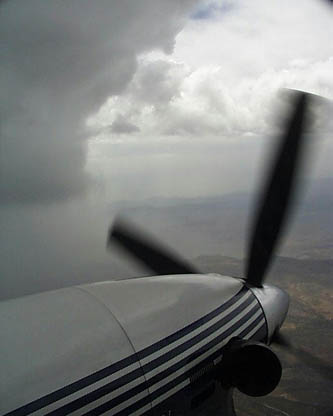 Reader
feedback (see below) was excellent on the VFR into IMC
accident article in our July, 2005 newsletter and if you missed it, we
recommend you take a moment to read it. Now, I've just come across University
of Illinois research that analyzes 409 of these accidents from 1990 to 1997
and tests possible hypotheses on why these accidents occur.
Reader
feedback (see below) was excellent on the VFR into IMC
accident article in our July, 2005 newsletter and if you missed it, we
recommend you take a moment to read it. Now, I've just come across University
of Illinois research that analyzes 409 of these accidents from 1990 to 1997
and tests possible hypotheses on why these accidents occur.
Here are some of the hypotheses:
Situation Assessment
Pilots press on into deteriorating weather because they don't realize
they're doing so. In other words, pilots continue from VFR into IMC
"when they misdiagnose the changes in, or severity of, the weather.
The loss of situational awareness that precipitates a 'VFR into IMC' event may
be due to a variety of reasons including a lack of experience interpreting
real-time weather by low-time or 'fair weather' pilots."
Risk Perception
"Another explanation for why pilots would continue VFR flight into IMC is
that pilots are overconfident in their abilities and do not fully
appreciate the risks of flying into adverse weather. Indeed, much of pilot
training involves teaching pilots to feel confident in their ability to control
the aircraft in all flight regimes. However, an unfortunate by-product of
this training may be a degree of overconfidence in one's skill level and an
unrealistic optimism about the chances of avoiding harm through personal
control....[one study showed] that general aviation pilots exhibited both
relatively low levels of risk awareness and generally high optimistic
self-appraisals of abilities and judgment"
Decision Framing
This is the hypothesis discussed in our July 2005
newsletter article. It suggests that pilots frame their decisions in terms
of potential loses (e.g. cost of diverting to another airport) and therefore
push on into bad weather, particularly if they're close to reaching their
destination. This may explain the large number of VFR into IMC accidents
that occur in the Livermore Valley--just short of pilots' destinations in the
S.F. Bay area.
Social Pressure
Pilots may feel pressured to reach their destination when they have passengers on
board.
Results
The study found what we've been telling you all along. While
about 20% of all GA accidents are fatal, 80% of VFR into IMC accidents are fatal
(and the most recent numbers from the Air Safety Foundation are closer to
90%!). What is new, is that they compared the top 11 accident
factors/causes for VFR into IMC accidents with GA accidents in general.
I've added a third column to their data which shows the ratio between the two
columns.
| Factors/Causes | VFR | GA | VFR/GA ratio |
| Weather conditions | 69.2% | 22.5% | 3.1 |
| Terrain conditions | 24.9% | 19.8% | 1.3 |
| Spatial Disorientation | 23.7% | .98% | 24.2 |
| Aircraft Control | 23.2% | 6.4% | 3.6 |
| Light Conditions | 23.0% | 4.89% | 4.7 |
| Lack of Instrument Time | 15.9% | .5% | 31.8 |
| In-Flight Planning/Decision | 12.7% | 5.9% | 2.2 |
| Preflight Planning/Decision | 11.2% | 4.9% | 2.3 |
| Weather Evaluation | 11.2% | 1.2% | 9.3 |
| Altitude/Clearance | 8.1% | 1.5% | 5.4 |
| Over Confidence | 7.5% | <1% | >7.5 |
Pilot Flight Experience
The median number of hours of flying experience for pilots with VFR into IMC
accidents was 580 hours vs. 900 hours for all GA accidents (statistically
significant to the 99% level).
Pilot Certificates
A larger proportion of pilots in the VFR into IMC accidents had only private
or student licenses (71.6% of the total), versus 57.9% of pilots involved in GA
accidents. Note: higher certificate in this case means Commercial or
ATP. The study doesn't address whether pilots had an instrument
rating.
Presence of Passengers
A statistically significantly higher proportion of VFR into IMC accidents
had passengers. 54.3% of VFR into IMC accidents had passengers versus 44.7% of
all other GA accidents.
Summary
The data
supports the Situation Assessment theory that pilots with fewer flight hours and
less instrument time may have less experience interpreting deteriorating weather
and flight visibility. Nonetheless, those of us with
thousands of hours are hardly immune to this accident type; one of the Livermore
Valley accidents was by a 10,000 hour ATP rated pilot. Don't fall
into the trap of believing a VFR into IMC accident won't happen to you just
because you're a high time pilot! In analyzing S.F. Bay area VFR into IMC
accidents, we found there was not a large advantage to having an instrument
rating.
Also, the data suggests that having poor weather evaluation skills contributes to these types of accidents. That's one of the reasons I often take students flying when visibility is less than 5 miles. I want them to be able to see what that looks like, so that they'll recognize it in the future.
The data also supports the Risk Perception theory that pilots are overconfident in their abilities, as this factor is more than 7.5 times more likely for these types of accidents. While it's great that pilots in general are confident, it's a little disturbing that every time pilots are surveyed, the vast majority rate their piloting skills as "above average." Of course, that's just not possible.
The data also supports the Social Pressure theory, since a higher percentage of VFR into IMC accidents carry passengers. The researchers felt that the Decision Framing theory should not be discarded, even though they were unable to find accident data that would validate it.
What to
do about it
So instead of
just talking about it, what do you do about it to avoid VFR into IMC
accidents? Here are some thoughts.
Check the weather. You should be calling FSS before every flight anyway, just to make sure there are no TFR's or NOTAMs that can bite you. You might as well check the weather at the same time.
Have alternate plans in mind. Think about where you're likely to encounter weather and have a plan for what to do about it when you encounter it. It shouldn't be a surprise to you that if you're flying back into a coastal region at night that you might encounter the marine layer. As my kids would say, Duh!
If you encounter diminished visibilities, follow your plan! That may be to do a 180 degree turn, divert to another airport, climb, request a pop-up IFR clearance or something else. Whatever it is, don't wait to do it! Too many accidents occur because pilots don't take action when they first detect a developing problem.
Get advanced training. Why not get that Commercial certificate or Instrument rating you've been thinking about?
Know where the terrain is. Add a GPS with terrain capability to your Christmas list.
Finally, remember that we're entering the dark time of year when you're far more likely to have a VFR into IMC accident at night. Here are the statistics for S.F. Bay area VFR into IMC accidents during the last 10 years.
| Total VFR into IMC | Day VFR into IMC | Night IFR into IMC | |
| April - September | 10 | 8 | 2 |
| October - March | 14 | 5 | 9 |

New
Pilot Destination: Aircraft Carrier Midway
A great new reason
to go to San Diego

Sometime you just get lucky. I was on a cruise ship for 10 days traveling along the west coast last month. Obviously, that in itself makes me lucky. Candidly, I just like getting away from it all and I'd be perfectly content if the ship didn't stop anywhere during the entire trip. The nice cool sea breeze is wonderful and of course you never starve on a cruise ship.
To my surprise, when we docked in San Diego, we were right next to an aircraft carrier which wasn't there when I was last there two years ago. In January, 2004, the U.S.S. Midway was transferred to a non-profit group to run it as a museum and they opened it a few months later. I've toured an aircraft carrier museum before, but this one is amazing! It's also a testimony to long range vision and persistence. Alex Uke, a local San Diego businessman, came up with the idea in 1993 when he heard that the Midway was being retired. He worked on it with state, local and Navy officials for eleven years, before the ship was transferred to the group he set up. He's also raised millions for the restoration and operation of the carrier. For a little over a year now, his dream has been open to the public. We spent nearly five hours touring the ship. It can be done in less, but we were just having too much fun!
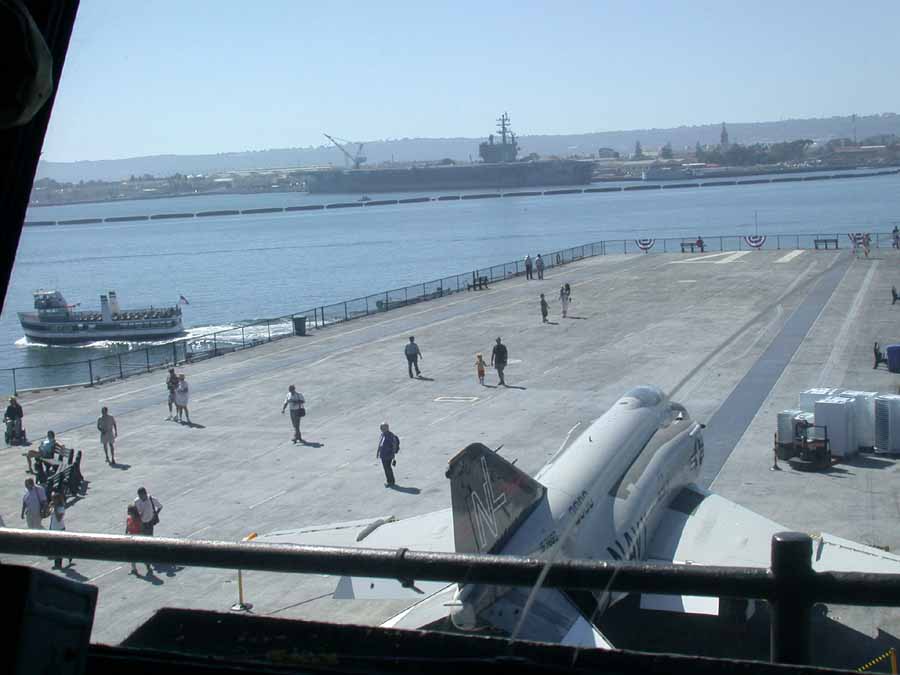
Location, location,
location
Just like in real estate, location of a museum is key, and they found
the right place for this one. The carrier is located on the waterfront in
downtown San Diego. It's right next to the popular Seaport Village, which
has all kinds of fun shops and a restaurant overlooking the bay. Above,
you can see the view from the "island superstructure" where the
Captain sits. The ship looks right across the water at the newest carrier, the Ronald Regan, which is home ported in San Diego.
Besides money, what else do you need to run a museum? Volunteers of course. And what better place to find them then in a Navy town like San Diego. The ship was well staffed with many retired military personnel, some whom had actually served on the Midway. Their colorful stories help bring the ship to life. In one funny moment, we heard one of the old salts admonish three teenage girls were climbing a staircase to an off limits area. It turns out that they were volunteers helping to restore another part of the ship that's not yet open to the public!
The
Tour
The tour, which is mostly self-guided, starts in the enormous hanger
deck, where aircraft are stored below the flight deck. For your $15
admission, you get a set of headphones and an audio device that lets you play
recorded segments at each of the 38 stops around the ship. After many of
the clips, you can push play again for additional information, which is usually
a story told by someone who served on the ship. The sound effects on the
recording are so real that often I found myself looking around to see what
airplane or helicopter I was hearing--which isn't too surprising, since every
few minutes an aircraft of some sort was indeed flying over us.
After a few stops on the hanger deck, we toured the berthing spaces, where the thousands of young sailors lived. Suddenly, my daughter's college room didn't look quite so small. Everyone had about 3 cubic feet of storage space under their bunk--which were stacked three high--and a small vertical storage locker. I think I took more than that with me for a 10 day cruise. Next was the Focsle, which is an abbreviation for the forecastle deck, where the chains for the anchors are stowed. Then a walk through the junior officers quarters where they had a little more space.
Then we climbed way down to the Main Control room that sent orders to the four engine rooms with their 12 boilers. Fortunately, the museum has added lots of padding to minimize bumps as you climb up and down the many tiny stairways. Even being careful and moving slowly, I banged my elbow hard once. I cannot imagine what it was like to try to run through the ship in an emergency!
Next stop was the #3 Main Engine Room, with its huge panel of gauges and brass control knobs. Then through the shiny, stainless steel galley that prepared thousands of meals per day. Coincidentally, we had just toured the cruise ship's galley the day before, and my wife commented on the remarkable similarity of the two (though there were no ice carvings to be found on the carrier!). Next, we walked into the mess deck, where one of the guides commented that it wasn't unusual for ordnance to be wheeled through the room while sailors were eating. That would get your attention! Next, we climbed down to the sick bay, which was located below the mess deck (coincidence I'm sure). I wasn't too surprised to hear that the most common thing they did was sew up people's heads after they accidentally bumped them on the ship! We then quickly went by the post office and the machine shops, which are still in use today to produce parts for the museum.
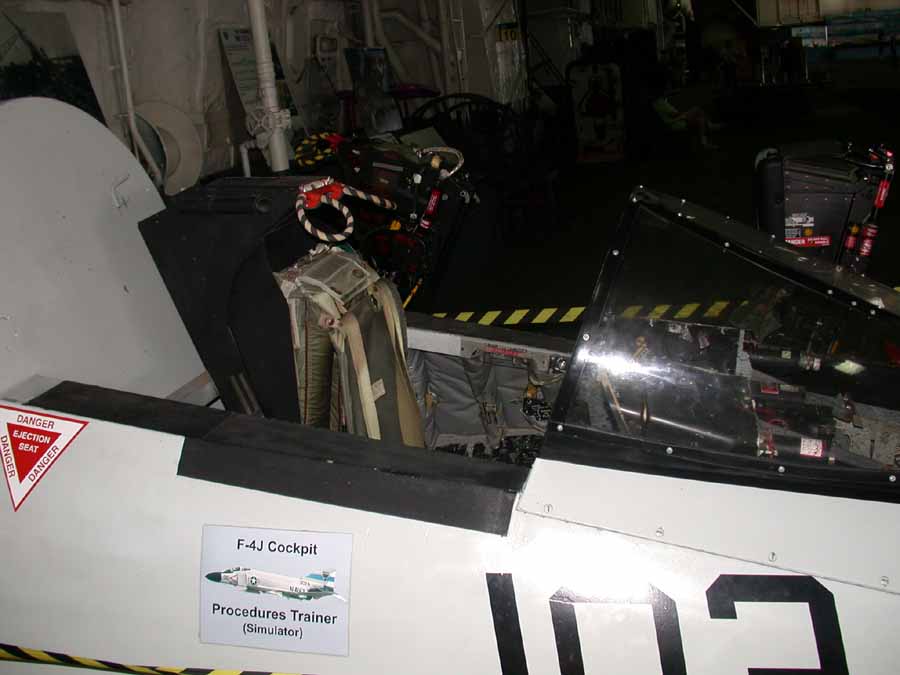
Simulator
Time
We then had to rush back to the hanger deck in time for one us (no,
not my wife) to spend 25 minutes flying an F-4J simulator. The simulators are
apparently the same ones that were actually used for training with one
exception--the primary flight instruments are replaced with a flat panel display
driven by software. The pilot's view from the cockpit is also projected
onto a screen that's probably 6 x 6 feet large. The young instructor, who flew
in the military, spent a few minutes briefing me on the use of the controls--no
I didn't tell him I'd spent a few hours in airplanes. After all, it was my
first time in an F-4!
Boy are those controls sensitive! It took a lot of work to maintain the proper pitch. I finally found that the best method was just to apply control pressure until the altimeter stopped moving. After shooting down a few planes, I went for the fun stuff--carrier landings! Unfortunately the rudder controls don't work--otherwise it would have been a lot easier. Also, I wasn't briefed on exactly how the "meatball" works until later on the flight deck. Nonetheless, I never "splashed" the plane, but only because I was watching the altimeter like a hawk. Without that and the meatball, it would have been easy to get too low.
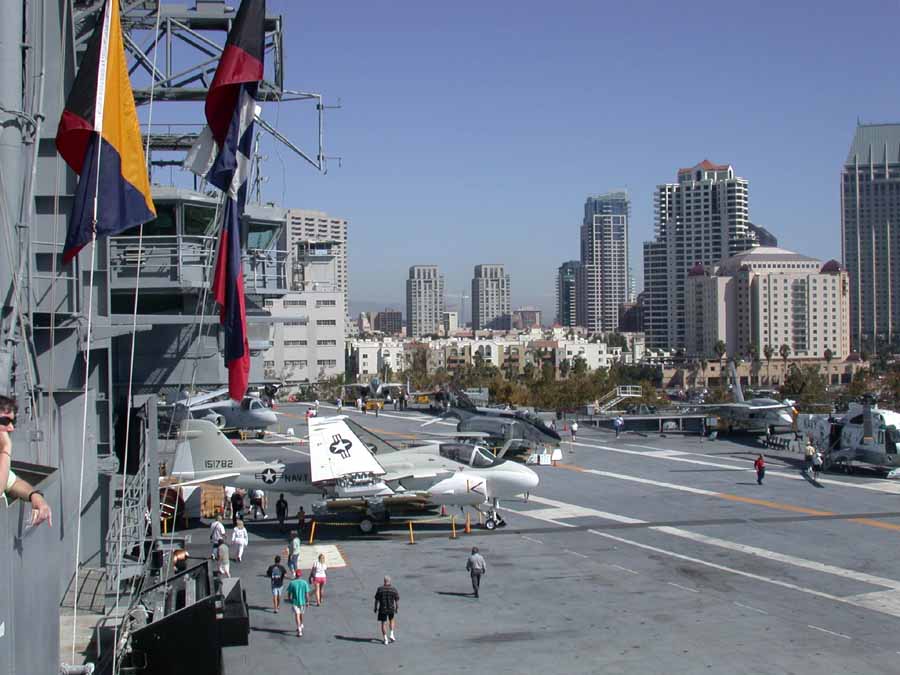
Flight
Deck
Up on the flight deck, there were more than a dozen jets and
helicopters, most of them on loan from the Navy Museum in Pensacola FL.
Planes included a F-14 Tomcat, F-4, A-7, F-8 and a F/A-18 Hornet painted with a
red star, like the ones used as "adversaries" in the Top Gun
School. Helicopters included a H-46 SeaKnight, SH-3 SeaKing and a SH-2
Seasprite. A couple of these were open and you could walk through them.
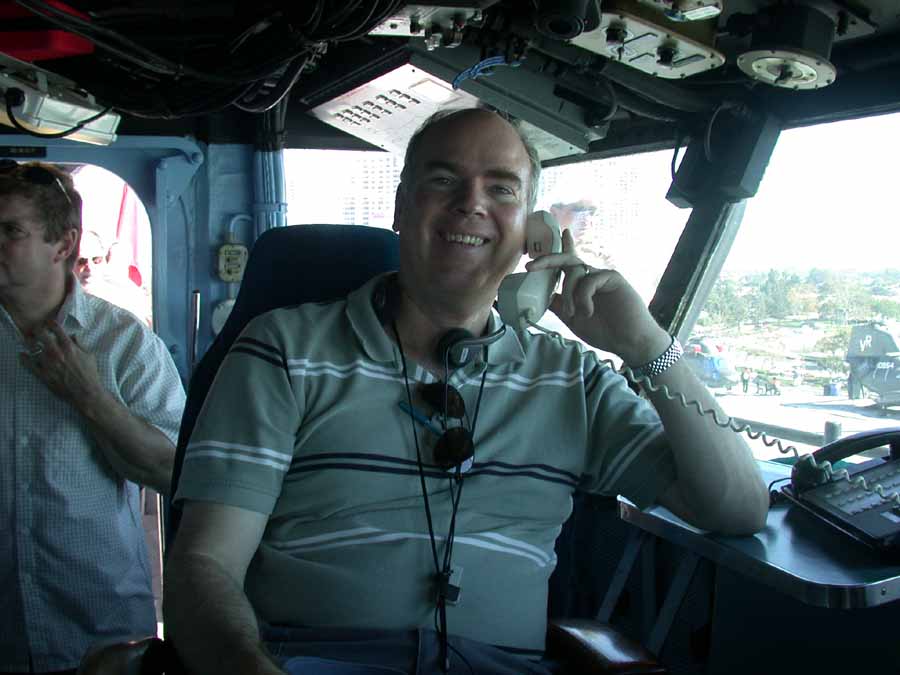
Max barking out orders from the Captain's chair.
Next stop was a tour of the "island." This is the one
part of the tour where you cannot self-guide yourself. You'll be sent up
in a group of about 25 people at perhaps 10 minute intervals. After the
long climb to the top, you'll have two stops where a museum volunteer gives a
talk. One is the flight operations area (probably not the correct name, so I
apologize), where the CAG oversees all landing operations. To the
right sits the "mini," who's responsible for aircraft after they've
landed.
At the other end of the island is the bridge where the captain sits (note the faux captain above) and orders are given for steering the ship. Other interesting things about the Midway:
Launched in 1945. One of three ships of the Midway class
Retrofitted in 1957 and again in 1971.
Retrofits removed all 18 of the 5" guns and replaced the single deck with an angled deck
Based in Japan from 1973 to 1991
Final mission: evacuating personnel from the Philippines after Mt. Pinatubo erupted.
The next time you're in San Diego, make sure you leave a few hours to visit the Midway and see a snapshot of history. It's within a couple of miles of the San Diego airport if you want to "fly in" to take a tour. Don't forget to try the simulator and sit in the Captain's chair! It may be the only time you get to issue an order.
Final
score: Goose 0, Airplane 0
There are no
winners when you hit a goose
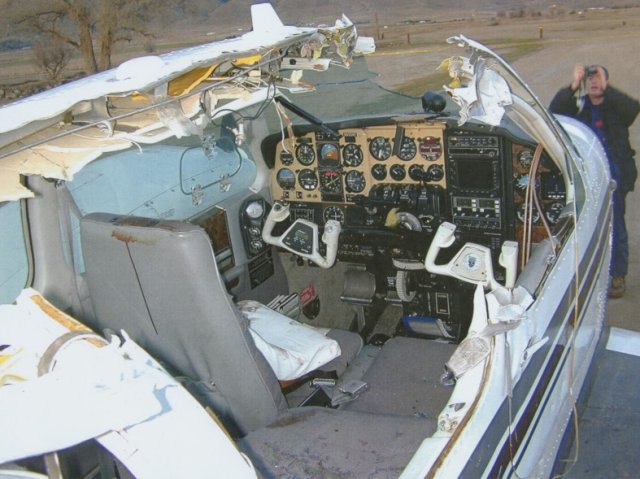
Last month, I pointed out the annoying number of geese at the Palo Alto airport that caused me to initiate a couple of go arounds. These days, I spend as much time looking for birds on final as I do monitoring an approach. Lest you think that my fear of creating fois gras on the fly is folly, feast your eyes upon these photos submitted by a long time friend and flight instructor. He didn't take the picture, but he recalls that it was of a goose hitting this aircraft in flight. According to www.birdstrike.org a 12 pound goose struck by a 150 mph aircraft generates the force of a 1,000 pound weight dropped from 10 feet!
And now for the rest of the story--which I just found while searching out information on this incident. According to Snopes.com, the photo is real, but it's the result on a mid-air collision that occurred near Tehachapi, CA on January 16, 2004. The pilot of this Baron landed safely, but the pilot of the Cessna 180 which struck this aircraft at around 6,000 feet didn't survive. No goose involved--this time.
Rocket
Launch
September 22, 2005
launch as viewed from Catalina
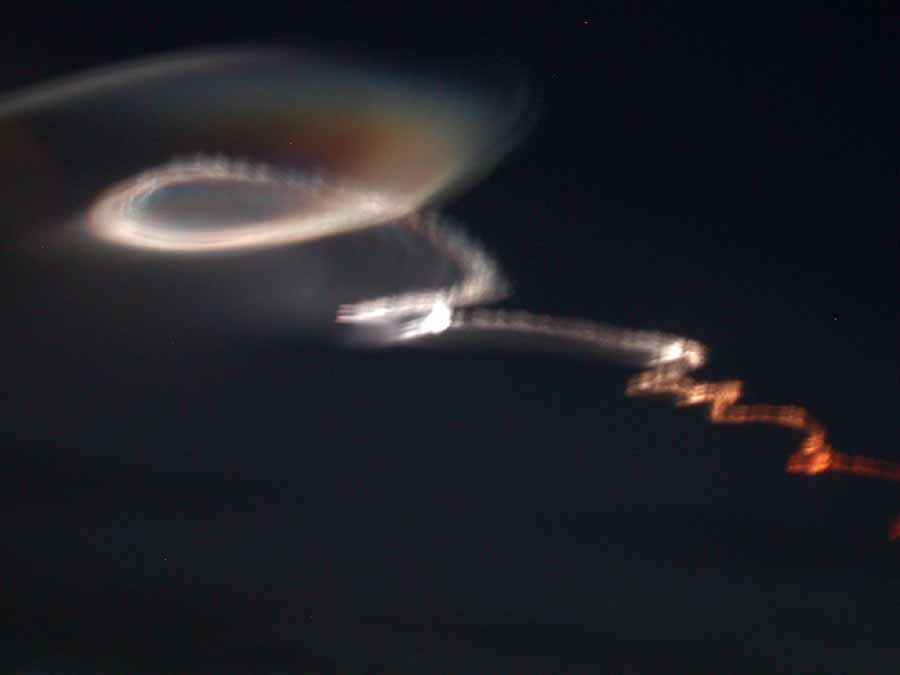 Life is
serendipitous, and while on a cruise last month, I just happened to be in the
right place at the right time to see something spectacular. A few
times in the past, I've gone outside my home in the S.F. Bay area to look south
and see if I could spot a rocket launch from Vandenberg AFB in southern
California. Alas, either we're too far north or the clouds always
prevented me from seeing one.
Life is
serendipitous, and while on a cruise last month, I just happened to be in the
right place at the right time to see something spectacular. A few
times in the past, I've gone outside my home in the S.F. Bay area to look south
and see if I could spot a rocket launch from Vandenberg AFB in southern
California. Alas, either we're too far north or the clouds always
prevented me from seeing one.
Our cruise ship had just left Catalina island and was headed south when, on a whim, I decided to go up on deck for a moment to enjoy the breeze before heading in for dinner. Overhead, a dramatic site was rapidly unfolding in the dark evening sky. I instantly knew that the bright, curvy contrail had to be a launch from Vandenberg. I ran down to my cabin to get my camera and ran back up to snap the photo you see here.
When I first saw it, there were two parts, a bright light moving to the west, which was the second stage of the rocket, and a curvy contrail to the east, which was from the rocket's first stage. By the time I reached deck again, the second stage was out of sight, but the colorful contrail from the first stage remained.
Only after I got back did I find out what we had seen. It was a Minuteman ICBM test launch according to one site, and according to another it launched a 890 pound satellite into low earth orbit. The typical Minuteman profile takes it to 100,000 feet (or about 19 miles) in 60 seconds, when the second stage starts it 2 minute burn.
Apparently, the particular launch was part of a program called "Streak" because the payload is launched into a low earth orbit, which appears to make the rocket go faster.
Practical Risk Management in Flight Training
PAVE your way to a safer flight
 Last
month, we talked about the PAVE checklist I often pass out copies of this
at safety seminars and you can
download a copy of the PAVE document at my website at www.sjflight.com/Safety.htm.
Look toward the bottom of the list of Accident Prevention Brochures and download
P-8740-56 Personal Minimums Checklist.
Last
month, we talked about the PAVE checklist I often pass out copies of this
at safety seminars and you can
download a copy of the PAVE document at my website at www.sjflight.com/Safety.htm.
Look toward the bottom of the list of Accident Prevention Brochures and download
P-8740-56 Personal Minimums Checklist.
There is an outstanding article that appeared on the subject entitled Practical Risk Management in Flight Training, which appeared in the FAA's Aviation News magazine. It's written by Susan Parson, a fellow Master CFI who joined the FAA last year. We talked at Oshkosh, where she gave a great presentation on the topic.
You can find her article on pages 3 through 7 at www.faa.gov/library/aviation_news/2005/media/MayJune2005Issue.pdf
You may want to print it out so that you can read it at your leisure.
Mr.
Whipple, Please don't push the spinner!
Just like the
Charmin, you need to be careful
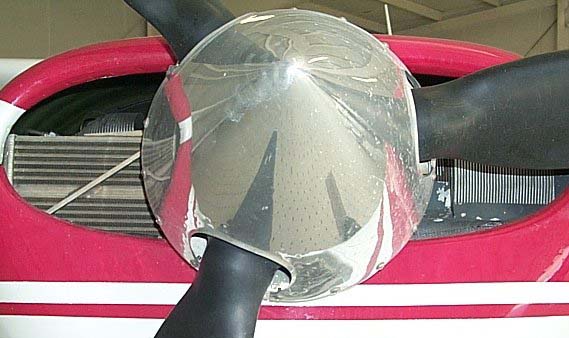 Many of
the things we hear in aviation seem to be common wisdom that get passed on from
CFI to student and, like an internet hoax, seem to sustain a life of their own
for years. A common one is don't operate your engine "over
square," meaning don't let the manifold pressure be higher than the
rpm. For example, operating at 25 inches of MP and 2500 rpm would be
operating at "25 square." Operating at 26 inches of MP and 2500
rpm would be operating "over square." Apparently this dates back
more than 50 years, when it was important when flying radial engines, but no
longer applies with today's modern engines. Yet somewhere out there, I
assure you that some CFI is passing this wisdom on to their student.
Many of
the things we hear in aviation seem to be common wisdom that get passed on from
CFI to student and, like an internet hoax, seem to sustain a life of their own
for years. A common one is don't operate your engine "over
square," meaning don't let the manifold pressure be higher than the
rpm. For example, operating at 25 inches of MP and 2500 rpm would be
operating at "25 square." Operating at 26 inches of MP and 2500
rpm would be operating "over square." Apparently this dates back
more than 50 years, when it was important when flying radial engines, but no
longer applies with today's modern engines. Yet somewhere out there, I
assure you that some CFI is passing this wisdom on to their student.
On the other hand, there are those things which we pass along to students that turn out to be very true. For years, I've always told my clients, don't push on the spinner when pushing an aircraft. I was told not to do it since it isn't structurally strong enough--and I've continue to pass this wisdom on to others, not always knowing for sure whether it was really true.
Well apparently it is. I just received an email this week from a fellow CFI who sent a note out to other instructors to warn us to let our clients know about this problem. "Do not push back on the Spinner....Please....Big dollars at stake." He should know. He has a Cherokee that's in a lease back program and for the second time in six months, he's had to have the airplane repaired because pilots have pushed on the spinner.
As he explains it, "pushing back on the spinner transfers all push-back force to the backing plate, which is a rather thin, expensive metal plate intended to be strong enough to support the spinner alone (which weighs about 5 pounds)." Here's the kicker--cost of the new plate is $510! I'm guessing that the labor is extra.
Rumor
Mill.....
New Cessna in the
Pipeline?
Remember that rumor that we mentioned last month? Cessna confirmed to
their dealers last week that indeed they're working on something new.
Unfortunately details were sparse and it doesn't sound like anything will
be out for a couple of more years (wasn't this the way IBM sold
computers?). About the only things mentioned were that it will have some
shoulder room and it will be fast. Apparently, there's no commitment as to
whether it will be metal or composite. In fact, it almost sounds
like they're still in the brainstorming stage.
Since it will be built in Independence, KS, it will probably have slightly lower priority than the new Cessna Mustang jet that we showed you in our Oshkosh issue. The official word is that the Mustang will be out in late 2006, which I think is aviation industry speak for "come back and see us sometime in 2007." So maybe by 2008, we'll get to see what the new Cessna single looks like.

The August issue was strictly about Oshkosh and we didn't include any letter
that came during July. Here are
some of your letters. Clearly the Cessna factory story and the VFR into
IMC articles were hits.
Max, I've instructed for over 25 years with about 7000 hours and
have been quite content to leave it alone for the last 2-3 years. You
e-mail topics peeked my dormant interest and I decided to check them out
You have a nice style of presentation; friendly, unassuming and pertinent.
I particularly enjoyed your factory tour and couldn't agree more with your VFR
into IMC. Keep up the good work.
Doug
[Regarding the VFR into IMC article] That's about the best
advice I've ever read in the 30 years since my first lesson! Bravo, sir.
Bill C.
Thank you for the Pilot Safety News! I enjoyed reading the
article, especially the Cessna factory visit.
HC
Thanks, Max. Your Pilot Safety News is always great.
Enjoyed the article about the Cessna factory especially and the return flight in
the new 206.
MB
Thank you for the Safety News. I appreciate it.
Christophe
Thank you, I appreciate your information.
BP
Local
Events
October 12, 2005 7PM Bay Area Accident Analysis Safety Seminar, West Valley Flying Club, Palo Alto Airport
November 1, 2005 7PM The Last Five Miles, Safety Seminar, NASA Ames, Mountain View, CA Eagle room
November 12, 2005 10AM G1000 Glass Cockpit Seminar, West Valley Flying Club, Palo Alto Airport
On the Air
I just heard this one today. I love the truthful approach!
Tower: DiamondStar 6 Juliet Papa, we didn't forget about you....well actually we did......cross 31 Right and contact ground.
Pilot Safety News
© 2005 by Max
Trescott
Master CFI & FAA Aviation Safety Counselor
Please contact me with your feedback or if I can be of service to you.
www.sjflight.com
(650)-224-7124 Subscribe or email Feedback on
Newsletter